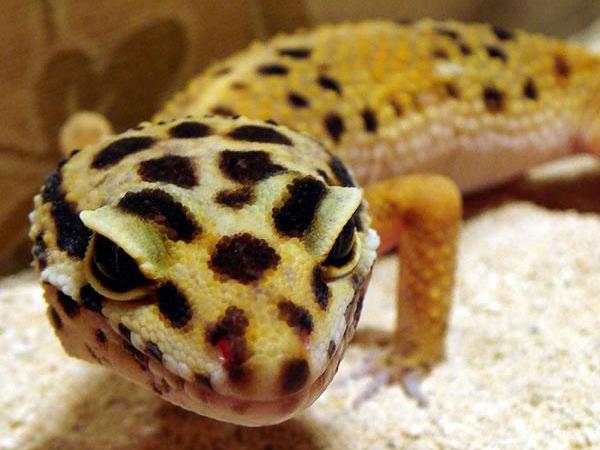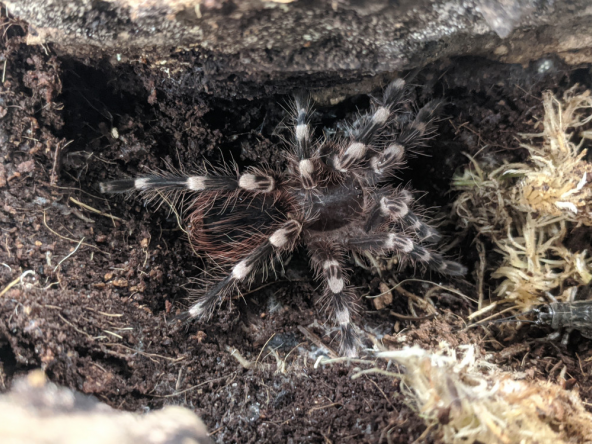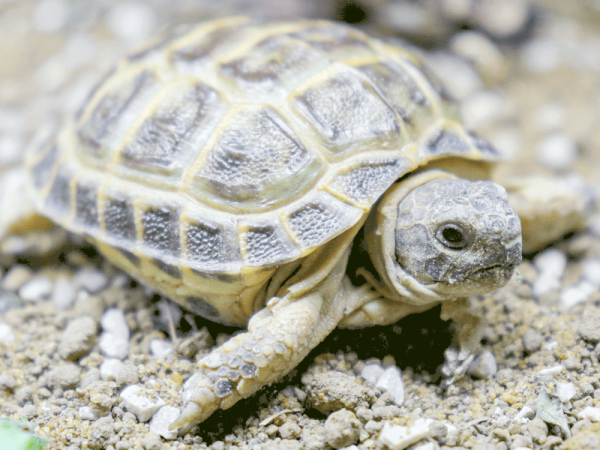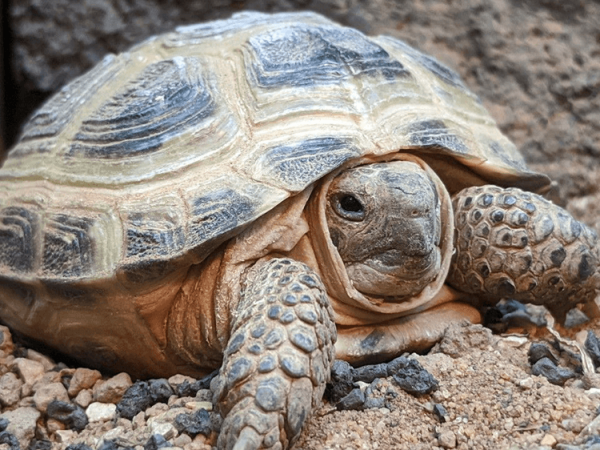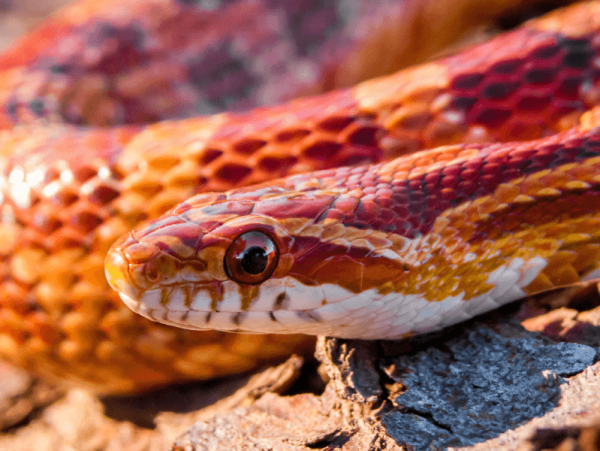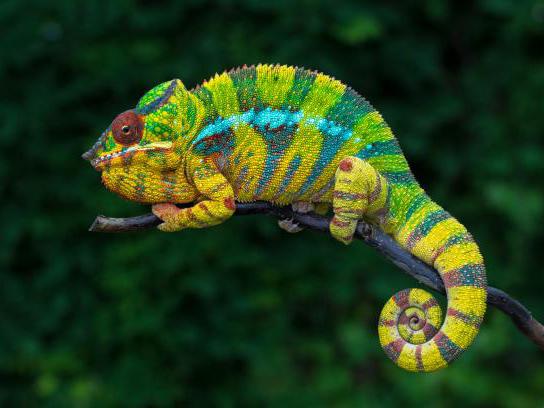Leopard gecko care: how to get started
Leopard geckos (Eublepharis macularius), also affectionately known as ‘leos’, might be a common enough sight among the reptile forums, but the big question we should be asking is why. The simple answer is that whether you’re a dedicated breeder or simply looking for a family-friendly pet, these relatively small desert reptiles offer something for everyone at a price that won’t twist your tail.
According to Shaune one of the reasons this type of lizard is so popular is because leopard gecko care is pretty straightforward compared with other varieties of lizard. “Because they’re a desert reptile they require minimal equipment, stay nice and small and are generally easy to keep”, says Shaune.
These friendly desert reptiles can also be the perfect way to introduce your kids to leopard gecko care. Native to the hot desert landscape of southern Central Asia, these are ground-dwelling, nocturnal reptiles and are the ideal pet for people who are at work all day and come home just in time to see them at their finest.
Shaune said: “They really aren’t a skittish or fast-moving kind of reptile. With regular attention, they come to love being handled and although they won’t usually bite, it is advisable to take care if allowing them to be handled by young children.”
While this type of lizard can be readily handled, especially when observing proper leopard gecko care, it’s always a good idea to be gentle during handling, since like many lizards there is always the potential of ‘dropping’ their tails. Unlike other reptiles such as the crested gecko, the leopard gecko will re-grow their tail, but as Shaune says: “the skin of a leopard gecko is always relatively bobbly, but the regenerated tail never really looks the same and you can obviously tell when a tail has been dropped.”
What to look for
In Shaune’s opinion, a good rule of thumb for buying a leopard gecko is never to buy anything under 20g, which equals out to about 4 inches in length. Shaune said: “When looking to buy this reptile it shouldn’t be skin and bone. And always take a look at the tail”, referring the tell-tale signs of a dropped tail. However a dropped tail is not in itself a sure sign of poor leopard gecko care. Other tell-tail signs for a healthy leopard gecko include clear, bright eyes and the absence of any leftover shed skin.
Leopard gecko care
Another great attraction of the leopard gecko is how relatively cheap and easy they are to obtain and leopard gecko care being so straightforward. Common varieties of Leopard geckos are available from most reputable retailers for around £30. And when it comes to the varieties of leopard geckos available Shaune said: “There are literally hundreds of varieties available, ranging in price from thirty quid to as high as a thousand pounds for the famous ‘white and yellow’ morphs.”
These fabled ‘white and yellow’ morphs are currently considered the elite variety of leopard gecko and are much sought after as a product of advanced leopard gecko care, as they offer clean, vivid colours and are highly prized as reptile pets. This is part of the great attraction of leopard geckos, with exciting variations of morphs being created all the time.
One of the most common questions Shaune is asked by the novice reptile keeper is how to tell the sex of their reptiles. “Sexing the leopard gecko is fairly straightforward compared to some other reptiles, but it can be confusing when you’re first starting out.
Both a female and male will have a noticeable ‘V’ shape between their back legs. With males this ‘V’ shape will be accompanied by two pronounced sacks, and lots of little pores, known as pre-anal pores dotted around the general area”, says Shaune. It should also be pointed out that these sacks can be difficult to see in young leopard geckos and may require a magnifying glass.
The leopard gecko diet
Although the staple diet of the leopard gecko is insects, such as locusts and meal worms, you can also treat them with the occasional wax worm. “If you really want to show off the leopard gecko, the best way is to feed it wax worm as a rare treat.” This is something equivalent to us eating a bag of sweets for breakfast, it might tickle your taste buds, but isn’t really doing your body any favours in the long run.
A common concern of leopard gecko care for desert reptiles in captivity is towards a condition called ‘impaction’. Very basically this is when over-excited, younger leopard geckos will ingest a small amount of sand when hunting and if this is done regularly they will become bunged up.
Shaune said: “Problems arise in this area when conditions aren’t right. For example, if the heat mat isn’t turned up high enough or the reptile isn’t getting enough calcium.” However if these conditions are optimal then ingested sand will usually pass through the reptiles system with no problem. A useful alternative if you choose not to use the standard sand is to use cage carpet.
Since good nutrition is an essential part of good leopard gecko care, Shaune pointed out that hatchlings and juveniles that are still developing will obviously require more food and nutrients than fully grown adults and as a result he says that it is a good idea to sprinkle the live food and mealworms with calcium and multivitamins.
As insectivores the staple diet of the leopard gecko is insects, but it is always a good idea to keep mealworms in a feeding dish, to ensure that they are always getting a steady source of nutrients, especially in cases of younger juvenile reptiles.
The Leopard gecko habitat
A suitable habitat is another important factor of good leopard gecko care. Shaune says: “They usually max out at about eight to 10 inches with the males, with females being a bit smaller”, says Shaune. He goes on to say: “if two males have been raised together from hatchling they might be capable of co-habiting, but when keeping two leopard geckos together pairing two females together is a better idea, unless you’re interested in breeding.”
According to Shaune a huge benefit to keeping a desert reptile, such as the leopard gecko is that as you progress as a reptile keeper and perhaps decide to get more reptiles, you are still able to keep the same accessories and equipment, meaning that all you need is a new reptile enclosure.
Shaune was quick to point out that bigger is not always better. “Especially with juvenile leopard geckos that need plenty of nutrition, having too much space for live food to escape can mean the difference between a well-fed and hungry reptile.
So that your leopard gecko has everything it needs to thrive, Swell offer a variety of leopard gecko starter kits, ranging from budget kits to beginner and finally advanced kits that answer all of your leopard gecko care needs. These include the essential items of heat mat, sand substrate, feeding dish and the essential addition of an attractive coconut hide for this nocturnal reptile to hideaway. A thermostat is also advisable to ensure that the heat mat maintains a comfortable range between 85 – 90F.
When choosing a starter kit Shaune strongly recommends the Swell Leopard Gecko Kit- Beginner, for younger leopard geckos. Whereas if you choose to purchase a larger leopard gecko it would be better to purchase the Swell Leopard Gecko Kit – Gold, as this provides the additional space required by larger reptiles.
Another point to consider with leopard gecko care is the need for UV exposure. Although it is not considered essential to leopard geckos, Shaune explains that some people have claimed that they benefit from a very mild 2.0 UV exposure. However, in Shaune’s experience these reptiles will be happy with natural daylight and do not enjoy bright lights. Instead choose a dark blue light, which still allows you to clearly view the reptile without distressing them.
The key to a good leopard gecko habitat
If you should decide to take one of these adorable reptiles into your home like with any reptile there are a few key pieces of information that will ensure a stress-free relationship. These points include the basic points, such as temperature, lighting and general health queries. To help keep things nice and simple Shaune has outlined what he thinks are some of the important points.
Shaune says: “Ideally you should always have a hot spot and a cooler area within your vivarium, with the hot spot having a temperature between 85 and 90 degrees Fahrenheit.” He was also quick to stress that nighttime temperatures should be reduced slightly to between 70 to 75 degrees Fahrenheit. This is also why using a good quality temperature gauge is so important in good leopard gecko care, allowing a loving owner to make sure that the reptile stays comfortable.
When asked about humidity Shaune cleared up my confusion by explaining that as desert reptiles leopard geckos do not require a great deal of humidity, with only one exception. “Shedding is very important to reptiles and with hatchlings you can expect this to happen every two to four weeks and less frequency as they mature, to eventually settle down into a pattern of something between every six to eight weeks.”
The reason Shaune wanted to get this across is due to reptiles need for humidity during the shedding process, explaining a few horror stories of leopard geckos losing fingers with their shedding if they lack adequate humidity. He says: “as soon as your reptile starts to take on a ghostly, opaque look you want to get some sphagnum moss filled with moisture in a small pot or hide.” This is apparently the ideal medium to help the reptile in its shedding process.
And if there’s any remaining doubt as to the Leo being a great first reptile you need only to look into those little sparkling eyes (moving eyelids being a defining feature of the leopard gecko) and the only doubt you’ll have is over how many of these cute critters to get.
If you would like to learn more about reptile care, take a look at our Crested Gecko guide.




